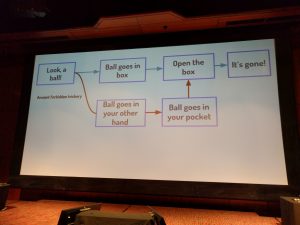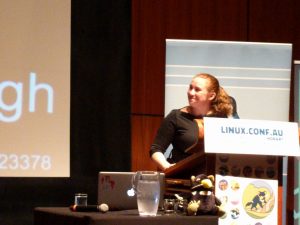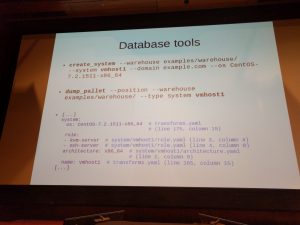Designing for failure: On the decommissioning of Persona
- Worked for Mozilla on Persona
- Persona did authentication on the web
- You would go to a website
- Type in your email address
- Redirects via login page by your email provider
- You login and redirect back
- Started centralised, designed to be uncentralised as it is taken up
- Some sites were only offering login via social media
- Some didn’t offer traditional logins for emails or local usernames
- Imposes 3rd party between you and your user.
- Those 3rd parties have their own rules, eg real name requirements
- Persona Failed
- Traditional logins now more common
- Cave Diving
- Equipment and procedures designed to let you still survive if something fails
- Training review deaths and determines how can be prevented
- “5 rules of accident analysis” for cave diving
- Three weeks ago switched off Persona
- Encourage others to share mistakes
- Just having a free license is not enough to succeed
- Had a built in centralisation point
- Protocol designed so browser could eventually natively implement but initially login.persona.com was using it.
- Relay between provider and website went via Mozilla until browser natively implemented
- No ability to fork the project
- Bits rot more quickly online
- Stuff that is online must be continually maintain (especially security)
- Need a way to have software maintained without experts
- Complexity Limits agency
- Limits who can run project at all
- Lots of work for those people who can run it
- A free license don’t further my feeedom if we can’t run the software
- Prolong Your Project’s Life
- Bad ideas
- We used popups and people reflexively closed them
- API wasn’t great
- Didn’t measure the right thing
- Is persona product or infrastructure?
- Treated like a product, not a good fit
- Explicitly define and communicate your scope
- “Solves authentication” or “Authenticate email addresses”
- Broke some sites
- Got used by FireFoxOS which was not a good fit
- Ruthlessly oppose complexity
- Tried to do too much mean’t it was overly complex
- Complex hard to maintain and review and grow
- Hard for newbies to join
- If it is complex then it is hard to even test that is is working as expected
- Focus and simplify
- Almost no outside contributors, especially bad when mozilla dropped it.
- Plan for Your Projects Failure
- “Sometimes that [bus failure] is just a commuter bus that picks up that person and takes them to another job”
- If you know you are dead say it
- 3 years after we pulled people off project till officially killed
- Might work for local software but services cost money to run
- Sooner you admit you are dead the sooner people can plan to your departure
- Ensure your users can recover without your involvement
- Hard to do when you think your project is going to save the world
- Example firefox sync has a copy of the data locally so even if it dies user will survive
- Use standard data formats
- eg OPML for RSS providers
- Minimise the harm caused when your project goes away






